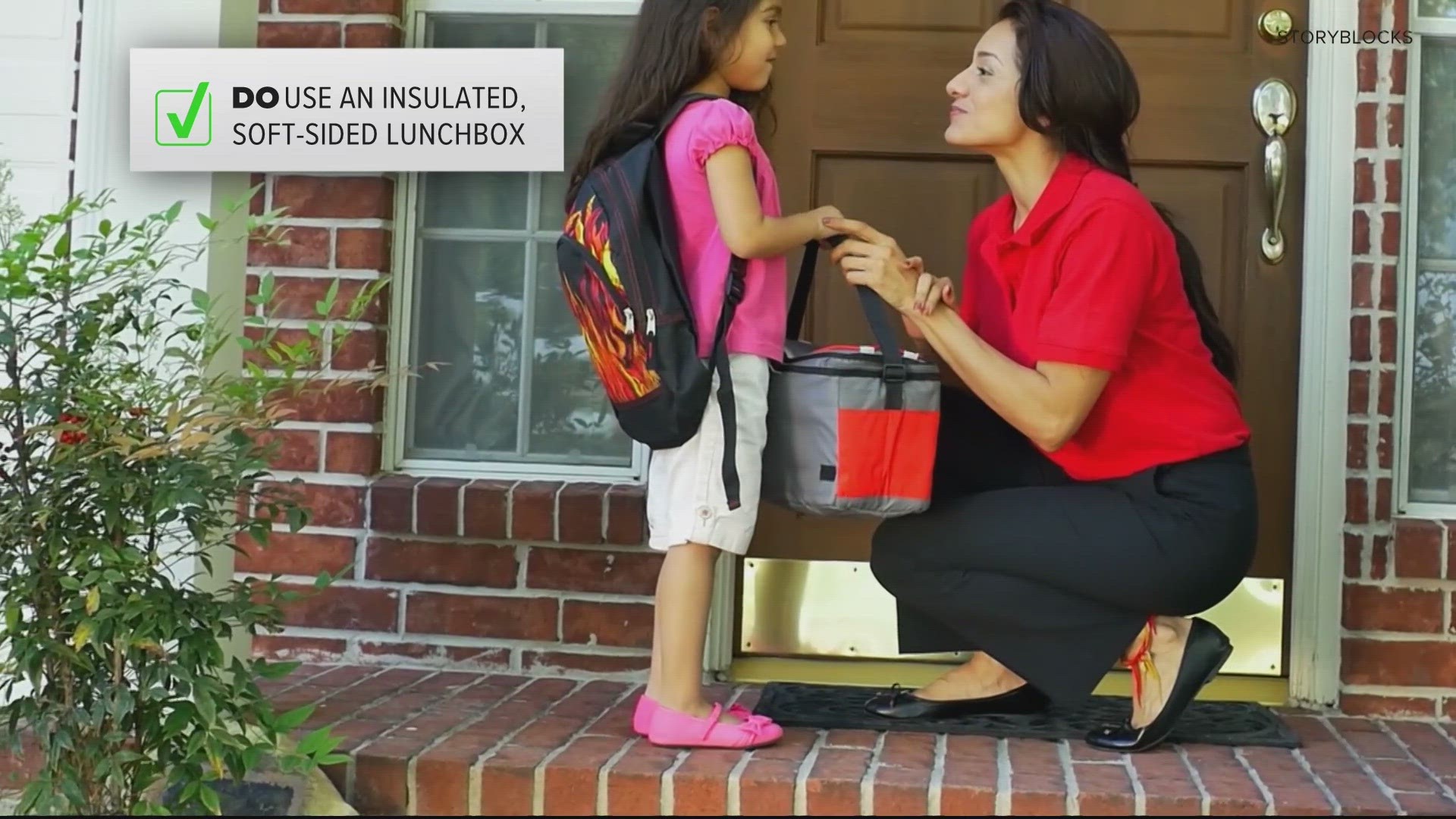WASHINGTON — Crust on or crust off? Brown bag or lunchbox? Is a handwritten note adorable or embarrassing? There's quite a bit to debate around the lunch table, but one thing everyone can likely agree on: You want to make sure what you’re packing is safe to eat.
THE SOURCES:
WHAT WE FOUND:
DO keep food cold until it’s time to eat. That means 40 degrees or below, according to The US Department of Agriculture. Perishable foods can only be kept at room temperature for two hours before conditions ripen for food poisoning. Along with the meal, pack two cold sources, like ice packs or frozen water bottles. Using a soft-sided insulated lunchbox is a safer bet: food safety experts at the University of Michigan recommend wiping it down each night after use.
The USDA says to never use a paper bag if you’re packing any perishable items. If brown-bagging it is your only option, DO consider packing foods that are stable without refrigeration, like whole fruits and veggies, hard cheese, canned meat or fish, chips or crackers, breads, mustard, and of course, peanut butter and jelly.
If you’re packing hot foods, DO use an insulated container like a thermos—the USDA suggests pre-heating it with a rinse of boiling water before adding the hot food—and DON’T open the container until it’s time to eat.
DON’T reuse disposable containers or packaging like plastic baggies – because the USDA warns it could contaminate other foods or transmit bacteria.
And finally – DON’T pack too much: that’s because many lunchbox leftovers can’t be repacked for the next day if they go bad.

